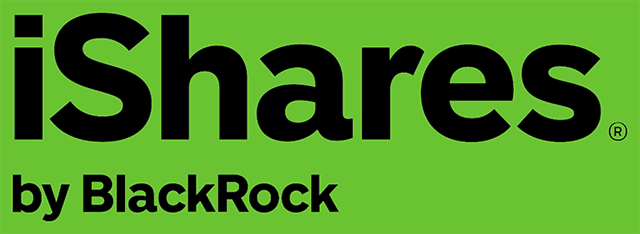BlackRock’s iShares LifePath Target-Date ETFs are a set of retirement tools that are unique to the ETF industry.
Target-date funds, which have been around for decades, help investors smoothly and seamlessly manage their assets throughout their investing lifecycle and into (and sometimes through) retirement. However, this type of fund has almost exclusively been limited to the mutual fund world, largely accessed through 401(k)s.
That’s a problem for the 57 million Americans who currently lack access to a 401(k) or employer-sponsored retirement plan, BlackRock says. “With nearly 50% of private sector workers unable to save through their employers, lack of access to a retirement savings plan is one of the most pressing challenges that needs to be addressed,” says Anne Ackerley, Head of Retirement at BlackRock.
Target-date exchange-traded funds (ETFs) can accomplish that, offering both low-cost and low-dollar exposure to Americans who don’t have workplace plans, but can still open an IRA, Roth IRA, even a traditional brokerage account.
What to Know About iShares’ LifePath Target-Date ETFs
The iShares LifePath Target-Date ETFs invest in a global (read: U.S. and international markets) portfolio of both stock and bond ETFs that starts with more growth focus and risk early on before tapering off and becoming more conservative and protection-minded over time.
According to iShares’ model, the typical target-date ETF will begin with 99% stock exposure at the “start of the career”—effectively, 40 years until the target date—then reduce to 87% stocks by halfway through the cycle, and pare down to just 40% stocks by the time you hit retirement.
You’ll remain invested in equities through retirement, providing added upside potential retirees need to continue growing their nest egg as they start drawing from it.
So, for instance, if you started investing at age 25, and plan on retiring in 2065, you would invest in a 2065 ETF, which would start at 99% stocks and 1% bonds. By the time you’re 45, the ETF would shift to 87% stocks and 13% bonds. And by the time you retire, the ETF would reduce its stock exposure to just 40%, with the remaining 60% in bonds.
iShares launched its LifePath Target-Date ETF line in 2023 with 10 funds—nine actual target-date funds, as well as a 10th retirement ETF (IRTR) featuring broad, conservative portfolio holding a roughly 40%/60% split of stocks and bonds. Here’s what the lineup looks like today.
- iShares LifePath Target Date 2030 (ITBD)
- iShares LifePath Target Date 2035 (ITDC)
- iShares LifePath Target Date 2040 (ITDD)
- iShares LifePath Target Date 2045 (ITDE)
- iShares LifePath Target Date 2050 (ITDF)
- iShares LifePath Target Date 2055 (ITDG)
- iShares LifePath Target Date 2060 (ITDH)
- iShares LifePath Target Date 2065 (ITDI)
- iShares LifePath Target Date 2070 (ITDJ)
- iShares LifePath Retirement ETF (IRTR)
Meanwhile, iShares LifePath Target Date 2025 (ITBA) has since been folded into IRTR, which is the same fate that will befall each of these ETFs once they reach their target retirement date.
Expenses on these funds range between 0.08% and 0.12%, which means you’ll pay between $8 and $12 annually on a $10,000 portfolio—lower than your average target-date mutual fund. (The fees vary based on the underlying expenses of the ETFs each target-date fund holds.) Additionally, the ETF wrapper tends to be much more tax-efficient than a mutual fund wrapper—not necessarily a concern for those with tax-advantaged accounts like IRAs and Roth IRAs, but helpful for those who only invest through a taxable brokerage account.
And, because it’s an ETF, there’s no minimum investment—just the price of a single share (or much less for those with brokerages that allow fractional shares). At the moment, a share of the iShares LifePath Target Date 2035 ETF trades right around $30.
Holdings of these target-date funds include broad iShares ETFs such as the iShares Russell 1000 ETF (IWB), iShares US Treasury Bond ETF (GOVT), and iShares Core MSCI Emerging Markets ETF (IEMG).
iShares notes that asset allocation is virtually identical to the iShares LifePath mutual target-date funds, though there are some differences between what underlying ETFs are available for the ETF target-date funds to hold, and what underlying mutual funds are available for the target-date mutual funds to hold.
Another Run at Target-Date ETFs

While these LifePath products represent the only target-date ETFs on the market, they’re not the first.
Todd Rosenbluth, Head of Research at VettaFi, noted on a conference call with BlackRock that “this has existed and it doesn’t exist anymore because there wasn’t demand,” referring to BlackRock’s 2014 closure of its previous target-date ETF line.
Asked what was different now, BlackRock notes that demographics have changed since then, and that the divergence in people who do and do not have access to 401(k) plans has grown. They also cited advancement in ETFs—the previous target-date ETFs were a different structure that mimicked an index, while the new target-date ETF line is actively managed.
“With these, we’re implementing new research every 18 months or so,” BlackRock says.
Who Are These Funds For?
As mentioned, iShares’ new target-date funds will allow anyone who doesn’t have a 401(k) to invest cheaply and efficiently in a target-date strategy.
The funds, while actively managed, are still inexpensive (even by ETF standards). They’re sophisticated, yet simple and effective tools that make sense for everyone, from beginners to pros, who understand the value of both diversification and automation.
Among other demographics, this could help younger generations who are both taking an interest in investing (and have more access to the markets) earlier than ever before. While investors in Robinhood and other new investor apps are often derided for their short-term-ism, these new funds provide an outlet for those who do believe in building wealth over time and want a steady hand to guide their longer-term investments.
This article first appeared on Young and the Invested and has been republished with permission.
Related:





![10 Best Investments for Roth IRA Accounts [Tax-Smart Growth] 6 best investments for roth ira](https://youngandtheinvested.com/wp-content/uploads/best-investments-for-roth-ira.webp)
![How to Use Your HSA for Retirement [Tax-Efficient Investing Tool] 7 how to use your HSA in retirement](https://youngandtheinvested.com/wp-content/uploads/how-to-use-your-hsa-in-retirement-600x403.png.webp)

